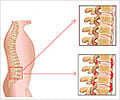A total joint replacement registry which adopts superior technology and design can greatly improve patient safety, quality of care, cost-effectiveness and research.

Since its inception in 2001, the TJRR has helped health care providers identify best practices, evaluate risk factors associated with revision surgeries, and assess the clinical effectiveness of implants. It also provides information that can be used to study patient demographics, implant characteristics and surgical techniques in relationship to post-operative complications such as infections, revisions and re-operations.
The TJRR also allows Kaiser Permanente to immediately identify and notify patients about recalled or defective implants prior to an official recall notice. The TJRR was instrumental in assessing more than 15 advisories and concerns with implants in 2009 alone.
In the article, the authors share insights from the organization's experience in developing, implementing and integrating the registry into KP HealthConnect®, a comprehensive health information system that is one of the most advanced and largest private sector electronic health records in the world, securely connecting 8.6 million people to their health care teams.
"To be successful, a large registry must have physician involvement, integration into workflow including rigorous validation and quality control methods, and provide ongoing feedback to participating surgeons and staff," said paper lead author Elizabeth Paxton, director of surgical outcomes and analysis at Kaiser Permanente. "Having used our registry to conduct research and translate these findings into actionable clinical-care guidelines, our total joint replacement registry shows that a national registry has the potential to improve patient safety and quality across the industry."
By analyzing information included in the registry, researchers found that younger patients, those with diabetes, and patients with diagnoses other than osteoarthritis (e.g. post-traumatic and rheumatoid arthritis) were at higher risk for revision total joint surgery. This information has been integrated into a risk calculator for surgeons and patients to use in making decisions about treatment. Research from the registry on implants and surgical techniques also has influenced changes in clinical practice, which have resulted in optimization of both techniques and implants.
Advertisement
Advertisement











